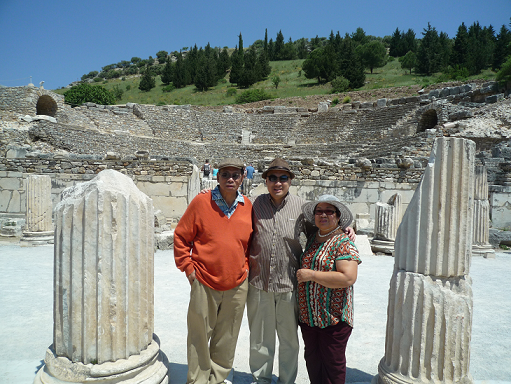When the Japanese ruled the Philippines

By Allen Gaborro
The memory of World War II and the Japanese occupation of the Philippines is hardwired into the collective Filipino consciousness. Filipinos of that generation, including Lourdes J. Astraquillo Ongkeko, preserve precious memories of that time.
Ongkeko has resided in the United States for many years. But this has not darkened her wartime memories. As she writes in her autobiographical composition, “Love Is Timeless in War and Peace: A Truth Beyond Compare”:
“The very early lessons I learned from World
War II are constantly enshrined in my memory.
They are not learned from books. Gradually, they
come from experience and common sense laced
with reality.”
This evocative impulse drives Ongkeko’s consideration of the past. “Love Is Timeless” weighs in on a chapter in Philippine history in which Imperial Japan attempted to politically, culturally, and linguistically de-territorialize Filipinos in the name of its thinly-disguised expansionist “Greater East Asia Co-Prosperity Sphere.”
In her foreword to “Love Is Timeless,” Ongkeko begins shaping the historical landscape of her book. She writes about how, as a young teenager, she experienced the moment that war was initiated with the bombing of her hometown Baguio by Japanese aircraft on December 8, 1941:
“That day in December, strong explosions suddenly
came after one another…Tears blurred our eyesight
…Peace of mind was making its departure as the clear
air substituted by smoke, made us cough intensely.”
Ten hours prior to Japan’s first assaults on the Philippine Commonwealth, the US naval base at Pearl Harbor in Hawaii was attacked by Japan thereby setting in motion America’s and the Filipino people’s entry into World War Two. By January 1942, the capital Manila had fallen. The city’s capitulation ushered in what would be the brutally repressive Japanese occupation.
The Japanese asserted their power and dominance over Filipinos with “gestures of contempt” as historian Renato Constantino called them. In “Love Is Timeless,” Ongkeko reconstructs how Filipinos were confronted with the choice of deprecating public acquiescence or ruthless physical punishment. With Japanese soldiers, Filipinos had to show demeaning obeisance:
“…all pedestrians who would walk by them, had to
bow correctly as subjects were expected to obey…
Bowing was not just a shallow one. It had to be in
compliance with what the authorities demonstrated:
deep enough.”
Bowing was especially difficult for elderly Filipinos:
“Those who failed to follow instructions were whipped:
Beaten by ropes…They were not allowed to get up until
they could repeat the kind of bowing that was required.”
Then there was the learning of a new language. After an episode in which Ongkeko’s father was lashed and then forcibly undressed by a Japanese soldier for ostensibly not bowing properly, he implored his daughter to learn Japanese at a Japanese language school. This was to avoid similar consequences in the future resulting from what Ongkeko’s father delicately rationalized as a “lack of oral communication.”
Heeding her father’s wishes, the selfless Ongkeko became proficient in Japanese. Alas, it was a voluntary move that an opportunistic Japanese propagandist would have been tempted to promote as a fine example of exuding the “Japanese spirit.”
That spirit entailed making Japanese an official lingua franca along with Tagalog in the country. In doing so, the occupiers were trying to forge a more Asian (i.e. pro-Japanese) identity for Filipinos after decades of “corruptive” Western influences.
In that context, electively learning Japanese ran the risk of being perceived by some Filipinos, depending on which ones you asked, as close as one could get to collaboration. Although this was undoubtedly not Ongkeko’s or her father’s intention.
If nothing else, studying Japanese helped Ongkeko navigate her way through a daunting existence. Becoming communicative in Japanese to the extent that Ongkeko was able to create for her a restorative psychological bridge to the days leading up to the return of American General Douglas MacArthur and the subsequent liberation of the Philippines.
By September 1945 after a bloody campaign, the Japanese surrendered to the American and Filipino forces. Ongkeko had persevered, occupation and all. In enduring war’s trials and tribulations, Ongkeko came to memorialize in “Love Is Timeless” the moral imperative that “Love is direly needed in war.”
© The FilAm 2021











